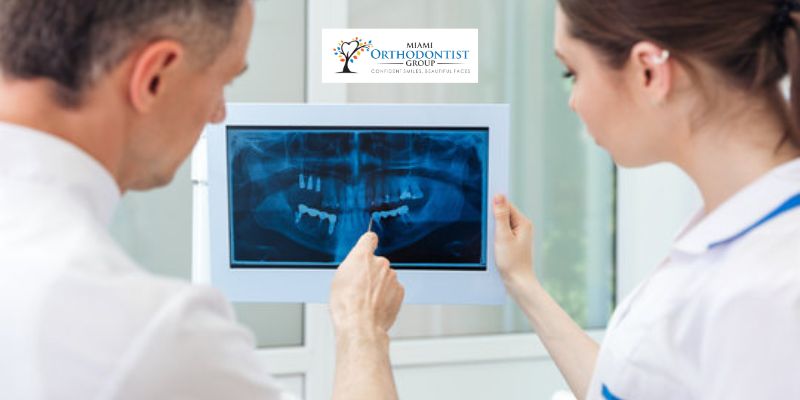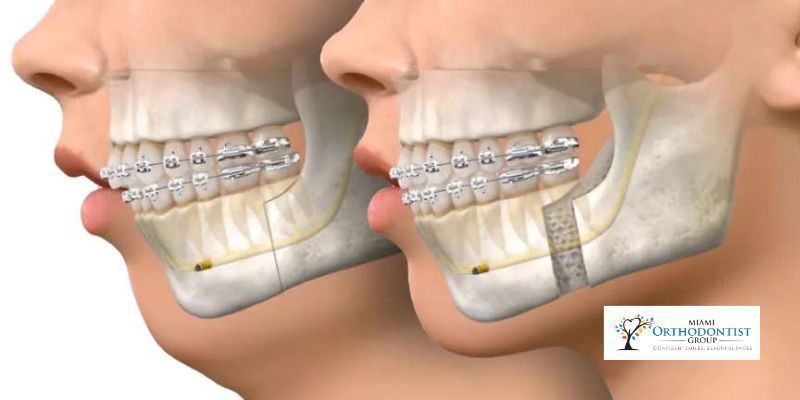Jaw misalignment, or malocclusion, can lead to many issues, ranging from difficulties in chewing and speaking to facial asymmetry and even breathing problems. While orthodontic treatments like braces can address mild misalignments, severe cases often necessitate a more comprehensive approach. Orthognathic surgery, a procedure that involves surgical repositioning of the jaws, offers a lasting solution to correct significant jaw misalignments. This guide will delve into the details of orthognathic surgery, its indications, procedures, recovery, and outcomes.
Understanding Orthognathic Surgery
Orthognathic surgery, derived from the Greek words “ortho” (straight) and “gnathos” (jaw), is a specialized procedure aimed at correcting structural abnormalities of the jawbones to improve their alignment. Typically performed by oral and maxillofacial surgeons in collaboration with orthodontists, this surgery addresses severe malocclusion cases that cannot be adequately corrected with traditional orthodontic treatments like braces alone.
Candidates for orthognathic surgery often experience significant functional impairments and aesthetic concerns due to jaw misalignment. Common indications include severe overbite or underbite, open bite, crossbite, facial asymmetry, and associated issues like difficulty chewing, speaking, or breathing.
The procedure involves careful evaluation and planning, including dental impressions, X-rays, and sometimes advanced imaging techniques like cone-beam computed tomography (CBCT). Orthodontic treatment may precede surgery to align the teeth within each jawbone, facilitating the surgical correction.
During orthognathic surgery, the surgeon makes incisions inside the mouth to access the jawbones, performs precise cuts (osteotomies) to reposition them, and stabilizes the bones with titanium plates, screws, or wires. The recovery process involves managing swelling and discomfort, adhering to a soft diet, and attending regular follow-up appointments to monitor progress and ensure optimal outcomes.
Indications for Orthognathic Surgery
Candidates for orthognathic surgery often experience significant functional impairments and aesthetic concerns due to jaw misalignment. Some common indications include:
- Severe malocclusion cannot be adequately corrected with orthodontic treatment alone.
- Difficulty in chewing, biting, or swallowing.
- Speech problems result from jaw misalignment.
- Temporomandibular joint (TMJ) disorders.
- Facial asymmetry is caused by disproportionate jaw size.
- Obstructive sleep apnea is due to airway obstruction related to jaw position.
Pre-Surgical Preparation
 Pre-surgical preparation for orthognathic surgery is crucial to ensure optimal outcomes and patient safety. It involves a comprehensive evaluation to assess the dental and skeletal relationships and plan the surgical approach accordingly. This evaluation typically includes dental impressions, X-rays, photographs, and sometimes advanced imaging techniques like cone-beam computed tomography (CBCT) to obtain detailed three-dimensional images of the jaw structures.
Pre-surgical preparation for orthognathic surgery is crucial to ensure optimal outcomes and patient safety. It involves a comprehensive evaluation to assess the dental and skeletal relationships and plan the surgical approach accordingly. This evaluation typically includes dental impressions, X-rays, photographs, and sometimes advanced imaging techniques like cone-beam computed tomography (CBCT) to obtain detailed three-dimensional images of the jaw structures.
Orthodontic treatment may be initiated before surgery to align the teeth within each jawbone, which helps facilitate the surgical correction process and ensures better postoperative occlusion. The orthodontist and oral surgeon work closely to coordinate the timing of orthodontic treatment and surgery for seamless integration of care.
In addition to diagnostic tests and treatment planning, pre-surgical preparation involves educating the patient about the procedure, potential risks, and expected outcomes. Patients are provided with detailed preoperative care instructions, including fasting guidelines, medication management, and lifestyle modifications.
Furthermore, patients may undergo preoperative medical evaluations to assess their overall health and identify any underlying medical conditions affecting the surgical outcome or anesthesia administration. This comprehensive approach to pre-surgical preparation helps minimize risks, optimize surgical outcomes, and ensure a smooth recovery process for the patient.
The Orthognathic Surgery Procedure
Orthognathic surgery is performed under general anesthesia in a hospital setting. The specific surgical approach varies depending on the type and severity of the jaw misalignment. Generally, the procedure involves the following steps:
- Incisions: The surgeon makes incisions inside the mouth to access the jawbones, minimizing visible scarring.
- Osteotomies: The surgeon carefully cuts and repositions the jawbones into the desired alignment using specialized instruments.
- Fixation: Once the jaws are properly aligned, small titanium plates, screws, or wires are used to stabilize the bones in their new position.
- Closure: The incisions are closed with dissolvable sutures, and any necessary postoperative instructions are provided to the patient.
Recovery and Postoperative Care
 Recovery and postoperative care following orthognathic surgery are critical phases in the overall treatment process aimed at ensuring a smooth and successful recovery while maximizing the long-term benefits of the procedure. Patients can expect some degree of swelling, bruising, and discomfort in the immediate aftermath of surgery, which can be managed with prescribed pain medications and cold compresses applied to the face.
Recovery and postoperative care following orthognathic surgery are critical phases in the overall treatment process aimed at ensuring a smooth and successful recovery while maximizing the long-term benefits of the procedure. Patients can expect some degree of swelling, bruising, and discomfort in the immediate aftermath of surgery, which can be managed with prescribed pain medications and cold compresses applied to the face.
Initially, a liquid or soft diet is typically recommended to minimize strain on the healing jawbones. To prevent infection and promote healing, patients are advised to adhere to strict oral hygiene practices, including gentle brushing and rinsing with prescribed mouthwash. Follow-up appointments with the oral surgeon and orthodontist are essential to monitor progress, assess occlusion, and make any necessary adjustments to orthodontic appliances.
As swelling subsides and healing progresses, patients gradually transition to a more regular diet and resume normal activities under the guidance of their healthcare providers. Physical therapy exercises may be prescribed to improve jaw mobility and muscle strength.
Throughout the recovery period, patients are encouraged to communicate openly with their healthcare team, promptly reporting any concerns or unusual symptoms. While the initial recovery phase can be challenging, patients typically experience significant improvements in jaw function, aesthetics, and overall quality of life in the months following surgery. Compliance with postoperative instructions and regular follow-up care are key factors in achieving optimal outcomes and long-term satisfaction with the results of orthognathic surgery.
Long-Term Outcomes
While the initial recovery period can be challenging, the long-term benefits of orthognathic surgery are often life-changing. Patients experience improved facial harmony, enhanced chewing and speech function, and a boost in self-confidence. Maintaining good oral hygiene, attending regular dental check-ups, and following postoperative instructions are essential to ensure the best possible outcome.
Conclusion
Orthognathic surgery is a highly effective treatment option for correcting significant jaw misalignments that cannot be adequately addressed with orthodontic treatment alone. This comprehensive approach can significantly enhance the quality of life for individuals with severe malocclusion by addressing functional and aesthetic concerns. If you believe you may benefit from orthognathic surgery, consult an experienced oral and maxillofacial surgeon to explore your options and develop a personalized treatment plan.


